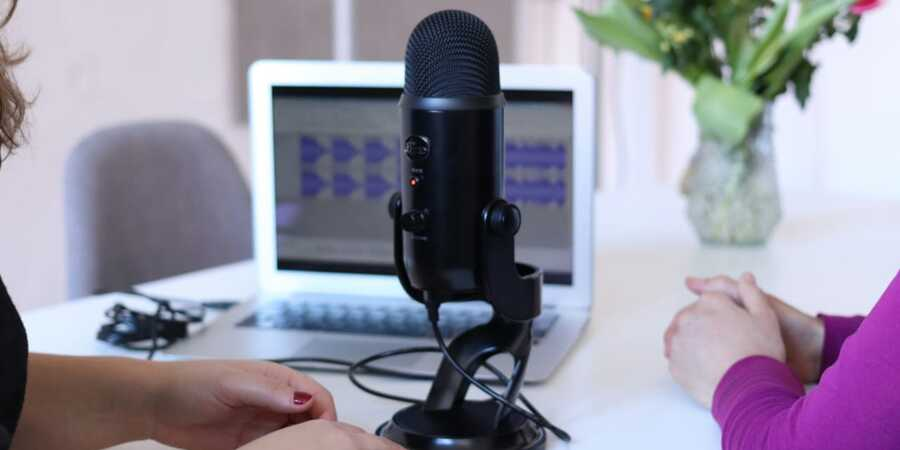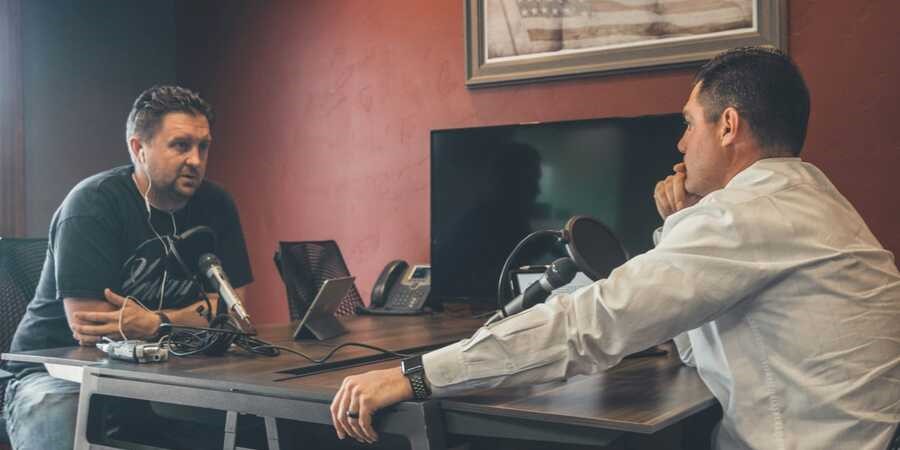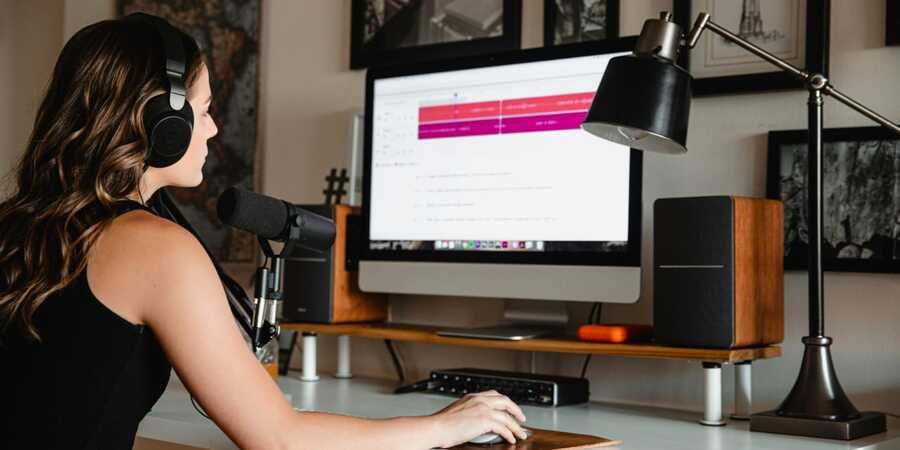Why podcasting?
Podcasting has grown in popularity as a means of connecting with listeners around the globe and sharing your voice. Reaching people is an exciting and fulfilling opportunity, whether your goal is to promote your company or pursue your passions.
However, without a defined plan, entering the podcasting world can initially feel daunting. This seemingly difficult activity can be made simple and successful by applying improved insights and comprehending the practical methods.
Easy Steps for Starting a Podcast
Following a step-by-step method customized for your needs is essential when starting a podcast.
Determine your specialty first so that you can pursue your interests and make sure your content appeals to people all around the world. If your podcast is in line with your passions, it will feel more genuine and intimate. After that, concentrate on creating a framework that forms the core of your episodes.
This will give the process of producing high-caliber episodes a clear road map. Invest in equipment and tools that will facilitate the process, such a high-quality microphone and audio editing software.
Make the most of the chance to properly market your brand when it’s time to debut. Distribute your podcast on social media and other channels to reach a wider audience. Make use of advice from professionals in the field to improve your strategy and make sure every action leads to a fruitful podcasting endeavor.

Step 1: Define Your Purpose and Concept
It’s important to make your goals clear before you begin a podcast. Consider whether you want to entertain listeners, share your knowledge, create a brand, or tell stories. Your goal will steer the development of a solid foundation and guarantee that your podcast is headed in the right path.
Spend some time developing a notion that appeals to your target audience and fits with your objectives. For instance, if your podcast focuses on specialized subjects, make sure your topic is both specific and interesting. A compelling theme that captures your enthusiasm will keep you inspired and give your audience confidence.
Lastly, think about what really makes your podcast special. Your content will stand out if you can find a new perspective. What distinguishes your method from others, you ask? Utilize these pointers to hone your concepts and create something memorable and impactful.

Step 2: Identify Your Target Audience
You must first determine who your audience is in order to launch a successful podcast. You can better tailor the content you create if you are aware of their age, location, hobbies, and issues. Consider your ideal listener. What challenges do they face? What do they hope to achieve?
Understanding your audience will help you provide content that meets their requirements and strengthens the bond and routines of your audience. It will assist you in making more informed choices regarding the organization of your content, like whether to include a group discussion or personal narrative, and whether to make it informal or instructive.
Gaining a deeper understanding of your audience increases engagement and encourages repeat business. Getting More Specific , It’s time to concentrate on your specialization after determining your audience. It will be simpler to regularly create material that connects if you are more focused on your subject.
Talking about your passions and what your listeners are genuinely interested in will help your podcast stand out, whether it is about fitness, technology, or storytelling. By concentrating on a certain niche, you can create a devoted following of listeners who identify with the material you create.

Step 3: Choose a Podcast Format
Decide how you’ll set up and structure your podcast before you even start it. Because they enable your strategy will determine the tone of your entire podcast, whether you’re posting individual episodes or conducting interesting interviews.
I can attest that starting out in a solo manner was immensely fulfilling. It allowed me to freely express my thoughts and demonstrate my experience, as well as to try out other narrative techniques.
But as I became more at ease, I saw that including a co-hosted component brought in new viewpoints and a lively discussion. This strategy maintained the content’s vibrancy and relatability.
Another tactic to improve your podcast is to include guest interviews. By utilizing others’ unique information, it enables you to reach new audiences and provide novel insights. On the other hand, a narrative-driven approach that emphasizes storytelling can be the ideal option if you enjoy creating immersive experiences.
Listeners can embark on a trip with each episode, producing content that sticks in their minds and makes them want to hear more. Try a variety of formats, such as a panel discussion with several speakers or a combination of the aforementioned elements. The ultimate objective is to produce a well-liked and captivating program that speaks to viewers, embodies your vision, and develops naturally over time.

Step 4: Pick a Catchy Name and Brand Your Podcast
A memorable name that is easy to spell and directly reflects your content will make your podcast stand out. For instance, when I started my own show, I experimented with different ideas until I found something that truly captured the essence of my vision. These two crucial first steps when starting a podcast are choosing the right name and perfecting your branding.
These elements create the first impressions for your listeners, so they must be carefully thought out. Adding relevant keywords to your title or description can also greatly improve your searchability on platforms.
The identity of your podcast is also greatly influenced by its visuals. One of the best ways to make your podcast instantly recognizable is to use visually appealing artwork. Professional designs can be made with the help of tools like Canva, or you can employ a talented designer to realize your idea.
Finally, don’t undervalue the importance of creating a positive atmosphere. Your tone should match the kind of content you’re providing, whether it’s serious, lighthearted, or informal.
Establishing this consistency makes it easier for your podcast to engage your listeners and increases the likelihood that they will return for more. Your podcast will make a lasting impression if you combine careful planning, imaginative execution, and a clear vision.

Step 5: Gather Your Equipment
You don’t have to spend a lot of money on equipment to start a podcast. Nonetheless, if you want your event to be memorable, you must make a significant investment in high-quality audio. A good microphone can make all the difference, as I discovered early on. For novices, USB microphones like the Blue Yeti or Samson Q2U are great choices.
They provide high-quality sound without going over budget. Headphones are equally essential for precise sound monitoring. You can make sure every detail is clear and sharp this way. A microphone stand keeps your setup steady during recording sessions, and adding a pop filter reduces plosive noises—those unpleasant “P” and “B” sounds.
These tiny tools help you maintain consistent quality and streamline your operation.
Consider supplementary equipment such as an audio interface for improved sound control or acoustic remedies for soundproofing your recording room if you want to further improve your production.
While these features aren’t necessary when you’re first starting out, they’re excellent for growing your podcast. You may produce a professional podcast without going over budget if you concentrate on the necessary tools and upgrade gradually.

Step 6: Set Up Recording and Editing Software
Overpowering, but the secret is simple. Audacity is a fantastic free choice for recording and editing, particularly if Selecting software that works for both your technical needs and your new podcast is crucial. Adobe Audition delivers professional skills and is affordable if you’re searching for anything more sophisticated.
. It might be difficult to choose the best equipment for production at the professional level when there are so many possibilities accessible. Alito is a great option for podcasters looking for a one-stop shop. From recording to editing to publishing, it streamlines the entire process. In my experience, it saves a lot of time, particularly when balancing several episodes.
Tools like Zoom, Riverside.fm, or Squad Cast are ideal for recording high-quality audio from remote interviews, even if your guests are located far away. You can concentrate on learning the fundamentals without being overwhelmed if you begin using software that is appropriate for your present skill level.
You can experiment with more sophisticated technologies as your podcast expands to improve workflow and provide your listeners with well-produced episodes.

Step 7: Plan Your Episodes
Carefully planning each episode is essential to maintaining a polished and engaging podcast. A solid plan guarantees a seamless flow and maintains listeners’ interest in your material. Making a script or outline is the first stage. By doing this, you can avoid awkward pauses and maintain organization
Include an introduction, go over your key points, and conclude with a call to action that nudges your audience to continue interacting. Selecting a regular duration for your episodes is another crucial step. For most podcasts, a duration of 20 to 40 minutes is ideal since it balances attention span and depth. Episode length consistency increases listener trust and increases the likelihood that they will return.
In my experience, the production process runs considerably more smoothly when a set time period is followed. Spend some time crafting interesting interview questions in advance if your podcast includes guest interviews.
This planning guarantees that your conversations stay insightful and lively. Careful questioning can help your material stand out, whether you’re talking to regular people or industry specialists. Each episode will demonstrate the quality of your podcast and connect with your audience if it is well-planned.

Step 8: Record and Edit Your First Episode
Choose a quiet area with little background noise when it’s time to record, position your microphone 6 to 12 inches from your mouth (this is what I’ve found works best for clear sound), and don’t skip the soundcheck—it’s crucial to do one before you start to adjust levels and avoid technical issues.
Most importantly, be genuine and speak naturally because this establishes a real connection with your audience. During the editing stage, concentrate on polishing your audio. Get rid of filler words, long pauses, and fix any errors to maintain an interesting flow.
You ensure that the sound is constant throughout the episode, make sure you balance the audio levels. Your podcast can seem more professional with the addition of an intro or outro song, but use effects judiciously to prevent overpowering your content.
You can create a professional episode that grabs your audience’s interest and establishes the tone for your podcast’s success by adhering to these easy guidelines. Your first recording can be a thrilling and fulfilling experience if you prepare and take care of it.

Step 9: Choose the Right Hosting Platform
Selecting the best hosting platform is a crucial first step when launching a podcast. The platform serves as the central location for storing your episodes and guarantees that they are appropriately uploaded to well-known directories like as Google Podcasts, Apple Podcasts, and Spotify.
The decision you make here has a direct effect on how simple it is for your audience to locate and interact with your program. Each of the several possibilities meets a distinct set of demands. Buzzsprout is a fantastic choice if you want something easy to use with robust analytics.
Podbean provides great monetization alternatives for anyone looking to make money. If money is an issue, Spotify’s Anchor offers a simple, cost-free option that’s ideal for new users. However, Libsyn is renowned for being trustworthy and providing thorough information about your performance and audience.
It’s important to think about your objectives while selecting a platform. Choosing the appropriate hosting platform will guarantee that your podcast is well-positioned for development and reach, regardless of your priorities regarding usability, analytics, or income.
Step 10: Publish and Promote Your Podcast
When your first episode is prepared, it’s time to start your podcast and concentrate on expanding your episode title and a thorough synopsis first. To aid listeners in rapidly understanding the material, offer show notes with timestamps, helpful links, and important takeaways.
For more exposure, don’t forget to publish your podcast to well-known directories like Google Podcasts, Apple Podcasts, and Spotify. The real audience for your podcast is found through promotion. Make use of efficient techniques to distribute your episodes. Use captivating images while posting on social media to attract attention.
To increase your reach, look into joint ventures and cross-promote with other podcasters. Spend some time communicating with your audience by leaving comments or sending them direct messages. Another excellent strategy to keep subscribers informed and engaged with your material is to send them email newsletters.
